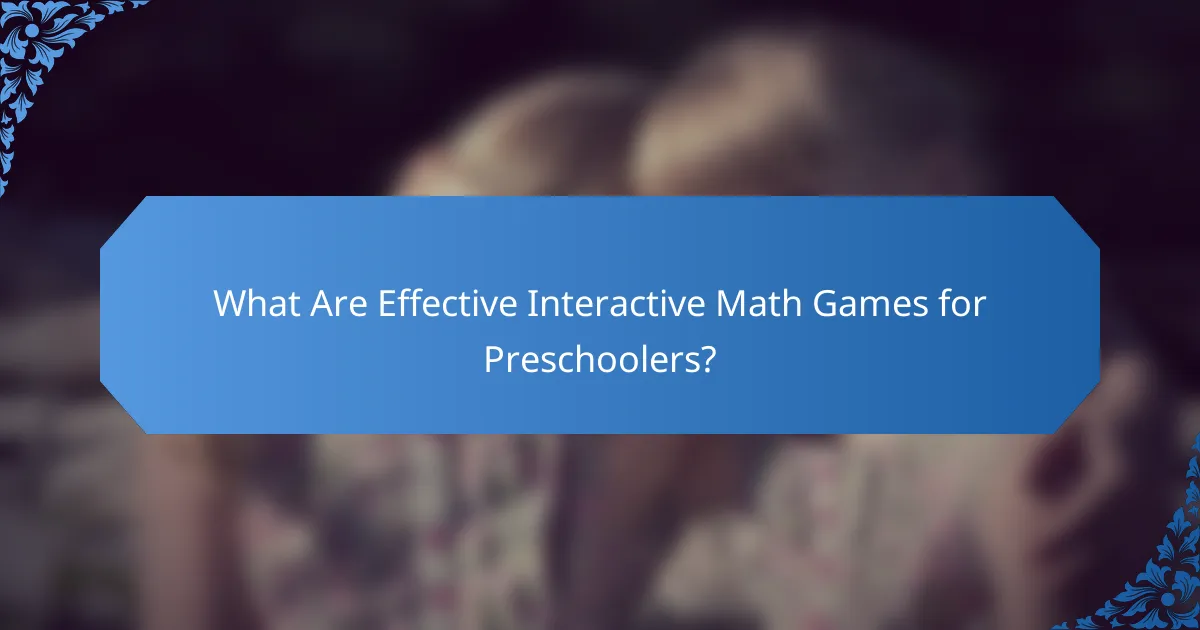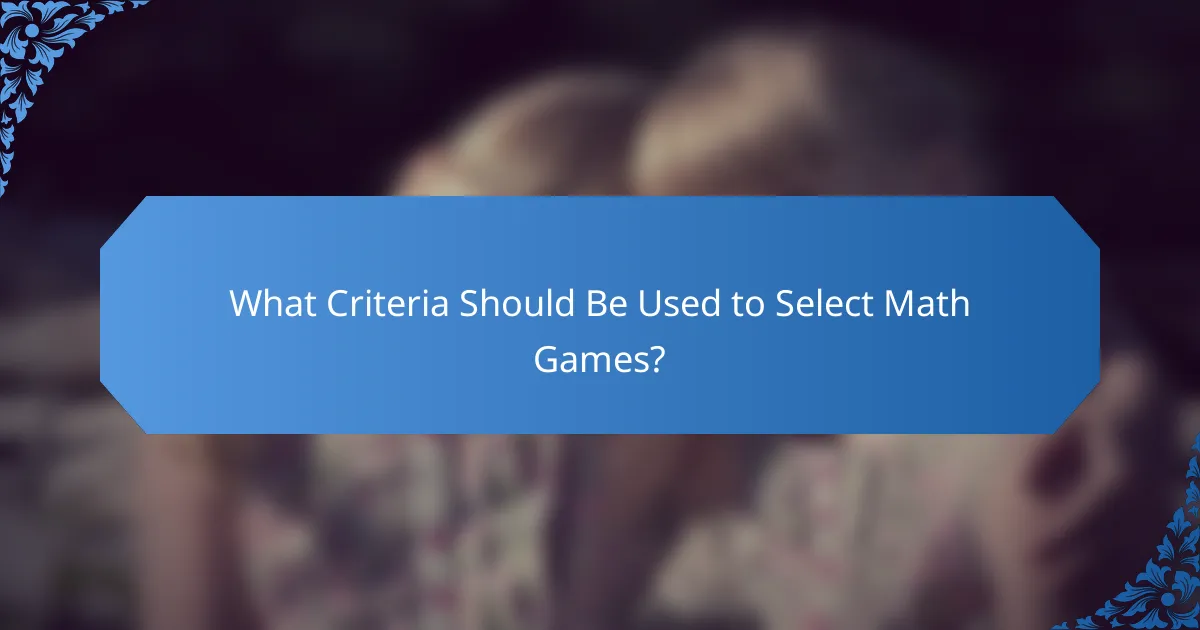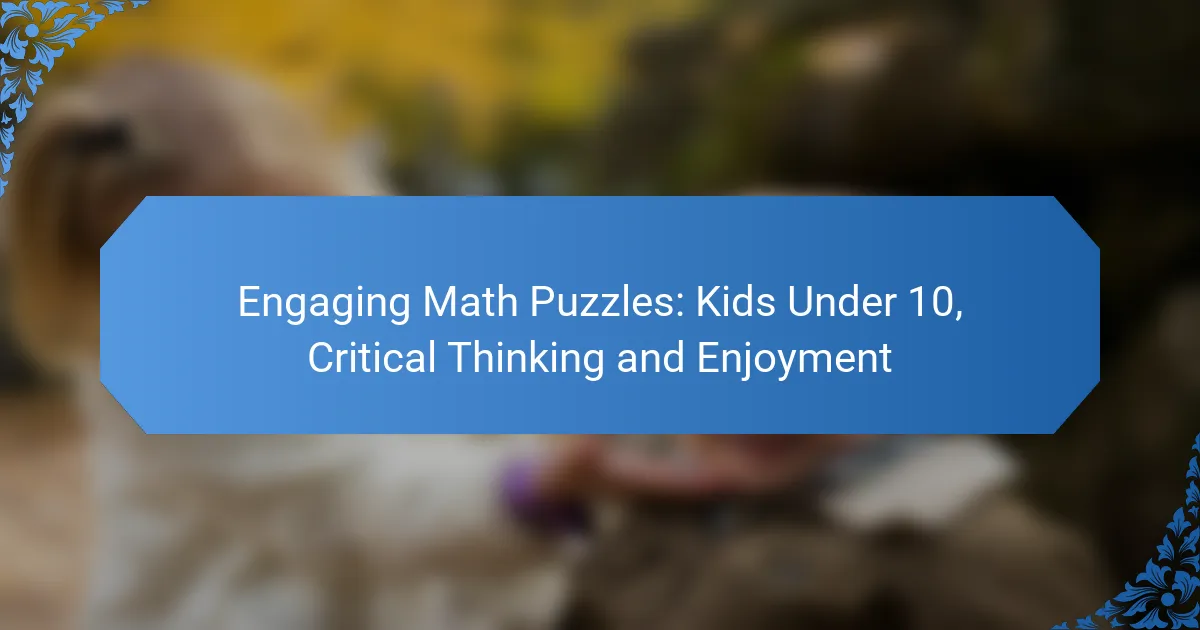Interactive math games provide an engaging way for preschoolers to learn essential math concepts while having fun. By incorporating colorful visuals, sounds, and interactive elements, these games capture children’s attention and encourage exploration. Parents can further enhance this learning experience by participating alongside their children, fostering a positive attitude toward math and supporting their foundational understanding.

How Do Interactive Math Games Engage Preschoolers?
Interactive math games engage preschoolers by making learning fun and stimulating. These games capture children’s attention through colorful visuals, sounds, and interactive elements, encouraging them to explore math concepts in an enjoyable way.
Enhances problem-solving skills
Interactive math games enhance problem-solving skills by presenting challenges that require critical thinking. For example, puzzles that involve sorting shapes or counting objects encourage children to devise strategies to find solutions.
Games that involve timed challenges can further develop these skills by prompting quick thinking and decision-making, which are essential for effective problem-solving.
Promotes social interaction
Many interactive math games are designed for multiple players, promoting social interaction among preschoolers. Playing together allows children to communicate their thoughts and collaborate on solving problems, fostering teamwork.
Group activities, such as math scavenger hunts, enable children to share ideas and learn from one another, enhancing their social skills while engaging with math concepts.
Encourages active participation
Interactive math games encourage active participation by requiring children to physically engage with the content. Activities like jumping to answer questions or using manipulatives to solve problems keep children moving and involved.
This hands-on approach not only makes learning more engaging but also helps reinforce mathematical concepts through active exploration.
Supports cognitive development
These games support cognitive development by challenging preschoolers to think logically and make connections between different math concepts. Activities that involve sorting, matching, or sequencing help build foundational skills necessary for later learning.
Additionally, interactive games can adapt to a child’s skill level, providing appropriate challenges that promote cognitive growth without overwhelming them.
Increases motivation to learn
Interactive math games increase motivation to learn by making education enjoyable. When children see math as a fun activity rather than a chore, they are more likely to engage and persist in learning.
Incorporating rewards, such as points or badges for completing tasks, can further boost motivation, encouraging children to take on new challenges and explore math concepts with enthusiasm.

What Are Effective Interactive Math Games for Preschoolers?
Effective interactive math games for preschoolers are engaging activities designed to teach basic math concepts through play. These games often incorporate colorful visuals, sound effects, and interactive elements that capture children’s attention while promoting learning.
ABCmouse Math Games
ABCmouse offers a comprehensive suite of math games tailored for preschoolers, focusing on foundational skills like counting, addition, and shape recognition. The platform uses a step-by-step learning path that adapts to each child’s progress, ensuring they remain challenged yet not overwhelmed.
Parents can track their child’s development through progress reports, making it easier to identify strengths and areas needing improvement. The subscription model provides access to a wide range of activities, which can be beneficial for consistent learning.
Starfall Math Activities
Starfall features interactive math activities that engage preschoolers with fun characters and stories. The games emphasize number recognition, basic operations, and problem-solving skills, all presented in a playful context that keeps children motivated.
Starfall is particularly effective for visual learners, as it combines audio instructions with vibrant graphics. The platform is free to access, though additional content is available through a paid membership, making it accessible for many families.
Cool Math Games for Kids
Cool Math Games provides a variety of math-related games that are both entertaining and educational. While it caters to a broader age range, many games are suitable for preschoolers, focusing on basic math concepts through engaging puzzles and challenges.
Parents should ensure that the games selected are age-appropriate, as some may be more complex. The site is free to use, which allows for exploration without financial commitment, making it a great resource for casual learning.
Mathseeds Interactive Lessons
Mathseeds offers interactive lessons designed specifically for young learners, combining math skills with engaging stories and characters. The program covers essential topics such as counting, addition, and subtraction through fun activities that maintain children’s interest.
With a structured curriculum aligned to early learning standards, Mathseeds provides progress tracking for parents. The subscription service allows access to a variety of lessons and games, ensuring a well-rounded math education for preschoolers.

How Can Parents Facilitate Learning Through Math Games?
Parents can enhance their children’s learning through math games by creating a supportive environment that encourages exploration and understanding. Engaging in these activities together fosters a positive attitude toward math and helps preschoolers grasp foundational concepts.
Set specific learning goals
Establishing clear learning goals is crucial for effective math game sessions. Parents should identify what skills they want their child to develop, such as counting, number recognition, or basic addition. For example, a goal could be to recognize numbers 1-10 by the end of the month.
These goals should be realistic and tailored to the child’s current abilities. Regularly revisiting and adjusting these objectives can keep the learning process dynamic and aligned with the child’s progress.
Provide guidance and support
Offering guidance during math games helps children feel secure and encourages them to take risks in their learning. Parents can demonstrate how to play the game, explaining the rules and strategies in simple terms. This initial support builds confidence and understanding.
As children become more comfortable, parents should gradually step back, allowing them to explore independently while remaining available for questions. This balance fosters autonomy and critical thinking skills.
Encourage discussion about game strategies
Discussing strategies used during math games enhances children’s understanding and critical thinking. Parents can ask open-ended questions like, “What strategy did you use to solve that problem?” This encourages preschoolers to articulate their thought processes and reflect on their decisions.
Additionally, sharing different approaches to the same problem can broaden their perspective and deepen their mathematical reasoning. Engaging in these discussions not only reinforces learning but also strengthens the parent-child bond.

What Criteria Should Be Used to Select Math Games?
Selecting math games for preschoolers requires careful consideration of several key criteria to ensure they are effective for engagement and learning. The right games should be age-appropriate, align with educational objectives, and feature a user-friendly interface to facilitate easy interaction.
Age-appropriate content
Age-appropriate content is crucial when selecting math games for preschoolers. Games should be designed to match the developmental stage of children aged 3 to 5, focusing on basic concepts such as counting, shapes, and simple addition. For example, a game that uses colorful visuals and playful characters can effectively capture a young child’s attention.
Consider games that offer varying levels of difficulty to cater to different skill sets within this age group. This allows children to progress at their own pace, maintaining their interest and motivation.
Alignment with learning objectives
Games should align with early childhood learning objectives, such as those outlined in national or state educational standards. Look for games that promote foundational math skills, including number recognition, basic operations, and problem-solving. For instance, a game that encourages counting objects can directly support learning goals.
When evaluating games, check if they provide feedback or assessments that help track a child’s progress. This can aid parents and educators in understanding which areas need more focus and reinforcement.
User-friendly interface
A user-friendly interface is essential for preschoolers, as it allows them to navigate the game independently. Look for games with simple controls, intuitive layouts, and engaging graphics that appeal to young children. For example, touch-screen interactions can be more accessible than complex button combinations.
Additionally, ensure that the game includes clear instructions and prompts. This helps children understand how to play without frustration, fostering a positive learning experience. Avoid games that require extensive reading or complicated navigation, as these can hinder engagement and learning.



